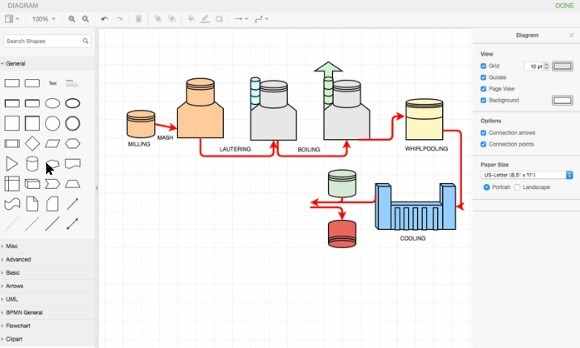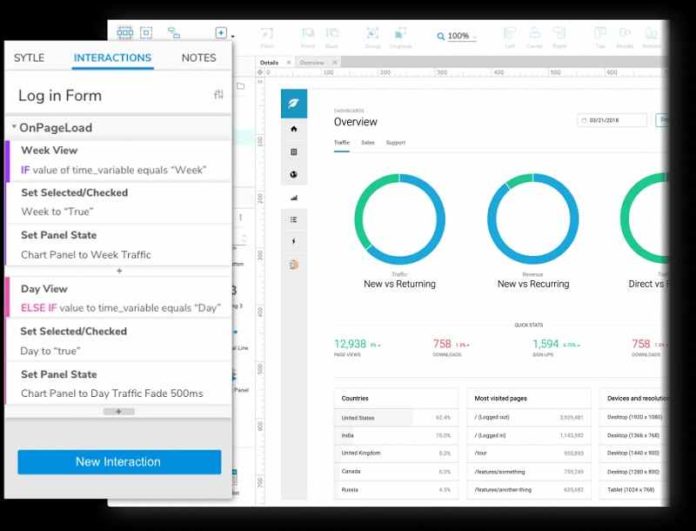How do you start and run a business? You narrow down on what you want to do in a specific industry, start researching about it, get the means, open a company, and start working to deliver in that domain as meaningfully as you can. This is basically how things go. But dig deeper and you’ll realize there are a lot of small processes that help run the bigger things in any business. Processes and tools that help manage various business operations to achieve the desired targets.
Diagramming tools are among those tools and they are highly effective and recommended when it comes to streamlining various business functions involved in achieving several business goals. Diagramming tools enable business analysts, in particular, to create diagrams like flowcharts to communicate various tasks. They bring clarity and eliminate confusion and redundancy in business modelling processes.
 Image credit
Image credit
It is easy to get confused when there are so many business management tools, free and paid, that can be used depending on your business requirements. And while you research about them on the internet, you can also explore some online forums where you can ask business questions and answers, especially related to diagramming tools. You can get opportunities to interact with people who might be already using such tools for their businesses.
That said, we are here to help you out by listing some of the most recommended ones:
- Samepage
- Axure
- Balsamiq
- Gliffy
- Visio
Samepage
Samepage is an award-winning business management tool, which is much more than a diagramming software. It is a collaboration tool for teams and individuals while offering useful diagramming features.
The tool offers features to create and share diagrams with your teams. Samepage offers many geometrical shapes, symbols, and arrows that can be used to create simple as well as complex flowcharts. And if you’re editing an existing flowchart or a similar diagram, your Samepage team members can see the changes in real-time without needing to refresh.
Also, if you’re a user of draw.io, you can import your draw.io flowcharts and edit or refine them in Samepage. The software further provides administrative functions like restricting viewing and editing capabilities to users.
One of the best things about Samepage is that if you have a small team, you can go for its free version, which still allows you to have unlimited team members, teams, and chat.
Axure
Axure is another prominent diagramming tool that provides a library of shapes for creating flowcharts and other diagrams to visualize business processes. You can even create shapes to your liking, depending on your requirements. Features like Connector Mode, Adaptive View, and Dynamic Content offer a wide range of customization to the diagrams making them more interactive. Several animation effects can also be used to make diagrams livelier. You can go for a trial version before jumping for a paid subscription.
Balsamiq
Balsamiq is a software that helps in designing websites and building desktop as well as mobile apps. The Balsamiq Wireframe is dedicated to creating professional sketches for user interfaces for websites and apps. It is light, fast, simple, and straightforward, keeping the focus on the flow of a wireframe. Balsamiq Wireframes is also available as Balsamiq Cloud. This enables better collaboration between individuals and teams. The user interface is quite easy and doesn’t require the users to have any programming background.
Gliffy
Gliffy is one of the key BI tools to enhance businesses. You can create flowcharts of your own or use pre-defined templates if they serve your purpose. You can simply drag and drop shapes and symbols on to the Gliffy drawing board, to begin with. There’s a real-time collaboration offer with team members for quick communication. What’s more, you can integrate with other software like Jira and Confluence for incorporating Gliffy diagrams. Gliffy, too, is available for a free trial for anyone looking to try it out.
Visio
Visio is a diagramming tool developed by Microsoft, which makes it a default choice for many businesses. Typical features include creating flowcharts, diagrams, org charts, floor plans, engineering designs, etc.
And one of the most useful features is that it can be easily used with Office 365. Syncing is available between data and charts, enabling real-time and automatic changes in the diagrams. Visio can also be used on a web browser, allowing its use from anywhere and anytime.
Multiple diagramming tools mostly offer features that are common as far as creating business process diagrams is concerned. Beyond that, it depends purely on other factors like business size, team size, learning curve, as well as budget requirements on which diagramming tool to go for. Most of them also offer a free trial, which is useful before opting for a paid membership, which is a great plus for small businesses.
Samuel Alfie is a blogger at ProProfs Discuss, the #1 Q&A website with millions of wisdom seekers collaborating to ask questions and get the best answers. He loves reading and writing about a variety of topics including e-learning, e-commerce, science, philosophy, pop culture, travelling, digital media, and more. With a knack for writing, enthusiasm for research and an editorial mindset, he loves creating content that resonates with the audience.
Photo courtesy: Axure







